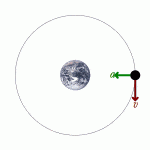Types Of Volcanoes Caldera
If you are interested in learning the various types of volcanoes caldera, then you just found yourself the perfect article.
Before we examine the types of volcanoes caldera, however, let ‘s start with some basics: what is a volcano? A volcano is an opening on the surface of a planet, which allows hot magma, volcanic ash, and gases to escape from the magma chamber and be released on the atmosphere and on the surface. There are thousands of volcanoes all over the earth. Volcanoes are formed when tectonic plates shift, either converge or diverge from one another. According to how they are formed, volcanoes are divided in five basic types : Calderas, Cinder Cones, Lava Domes, Shield volcanoes and Stratovolcanoes. Each type has its own characteristics. The one thing that they have in common is that they can either be active all of the time or be dormant for centuries. When a volcano erupts, it can cause many hazards, but it also releases pressure from inside the earth. Thus, though they are dangerous, they are also necessary; a necessary evil as people say.
The most explosive, deadliest and most nasty type of earth’s volcanoes are calderas. Their eruption can make the earth to shake, and they may cause pyroclastic flows, tsunamis or even darkness for many days or even months. A caldera is usually formed by the collapse of land following a volcanic eruption and has a very big and circular shape. This round shape justifies the name caldera which comes from the Spanish word caldera, which in turn comes from the Latin word caldaria, meaning “cooking pot”. The diameter of the circular pot exceeds 1 mile. These volcanoes are so explosive that, when the volcano blows off, so much magma comes out of the top, that the magma chamber empties beneath the volcano inadvertently causing the collapse; the collapse is due to the fact the volcano weighs too much and the emptied chamber is unable to support the weight of the volcanic edifice.
There are three types of volcanoes caldera:
a) stratovolcanoes that turn into calderas as a result of cataclysmic eruptions. The result of this caldera type is a Crater Lake. Here is an example: Crater Lake, Oregon, is the result of the sudden and violent eruption of the ancestral stratovolcano Mt. Mazama about 6850 years ago, which now host one of the deepest lakes in North America.
b) the most intriguing among the three types of volcanoes caldera, however, are negative volcanoes that form calderas gradually as a result of a series of eruptions . These calderas are not produced by sudden catastrophic events. Instead, they emerge in stages: these calderas are gradually enlarged by episodic collapses. Shield volcanoes Kilauea and Mauna Loa in Hawaii are an excellent example of this particular type of volcanoes caldera.
c) as for the last of the three types of volcanoes caldera are resurgent calderas. These are the largest volcanic structures on earth. The youngest of these resurgent calderas is the 75,000-year-old Toba Caldera on the Indonesian Island of Sumatra. This volcano released about 2,800 km3 DRE of ejecta and is the largest known eruption within the last 25 million years.






